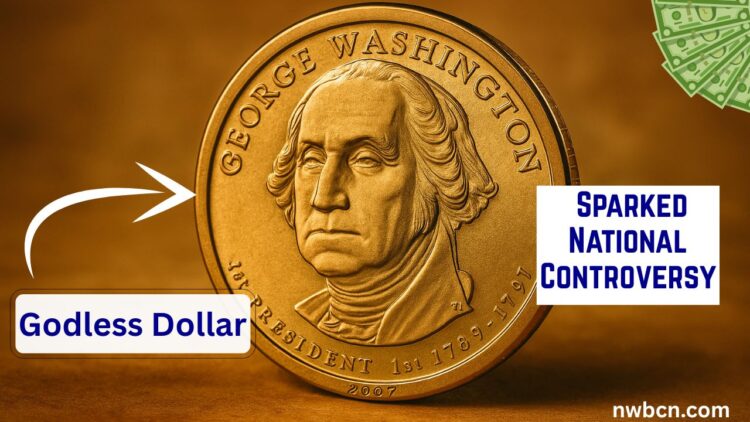In early 2007, the U.S. Mint released the first George Washington Presidential $1 coins — but some emerged missing the key motto “In God We Trust”. These so-called “Godless Dollars” sparked outrage on social media, spurred political debate, and became instant collector curiosities. All because a newly mandated edge lettering process went awry.
New Dollar Series, New Edge-Lettering Rule
The Presidential $1 Coin Act of 2005 mandated placing “In God We Trust”, the mint year, and E Pluribus Unum on the edge — not the face, as previously done.
- This was the first edge-lettered circulating coin since the 1907 Saint-Gaudens dollar.
- The act aimed to prevent coin removal (“nibbling”) and align with anti-counterfeiting needs.
The Washington coins entered circulation on February 15, 2007.
A Mint Malfunction & Public Outcry
How the Error Happened
- The Philadelphia Mint experienced edge-incused engraving failures, producing tens of thousands of coins lacking the edge inscriptions .
- These error coins reached the public within days, prompting confusion.
Spread of Panic
Chain emails urged a boycott: “‘IN GOD WE TRUST’ IS GONE!! REFUSE NEW COINS!”.
- FactCheck, Snopes, and PolitiFact debunked it — noting the omission was a minting error, not policy.
- Nonetheless, AP, CBS, and local outlets covered the anomaly with alarm.
National and Legislative Reaction
- The U.S. Mint acknowledged the issue on March 7, 2007, citing quality-control faults, and promised to fix the presses.
- Rumor: Nearly 50,000 coins were released without inscriptions.
- Congress responded by passing a 2007 law relocating “In God We Trust” back to obverse or reverse for future designs like those from 2009 onward.
Collector Interest & Market Value
These error coins quickly became collectible.
| Coin Type | Estimated Errors Released | Collector Value (2007) |
|---|---|---|
| Washington 2007 “Godless” | ~50,000 | $225–$735 each |
| John Adams Dollar | Fewer known | Comparable or higher value |
- Early eBay sales recorded first coin at $612, soon rising to $735.
- Many errors were misidentified or tampered with (e.g., filed edges).
Broader Impact: Trust, Faith & Coin Philosophy
- Some saw the omission as symbolic of secular drift in government.
- Others defended it as production glitches, not ideological moves.
Courts had previously validated “In God We Trust” on currency:
- Aronow v. U.S. (1970): Ninth Circuit ruled it’s patriotic, not religious.
- Newdow challenges (2005–2010): Courts rejected First Amendment claims.
Still, controversies prompted renewed interest in the motto’s presence.
Why the “Godless Dollar” Gains Value
- Rarity from error: Edge omission was unintentional, limited to early mint runs.
- National attention: Media scrutiny gave the coins cultural — even political — significance.
- Collector demand: 2007 and 2008 coins with full edge lettering—fixed design—are common, while error issues remain scarce.
- Official fixes: Legislation refocusing the motto onto the face validates the 2007 edge omission as uniquely temporary.
Timeline & Coinage Adjustments
| Date | Event |
|---|---|
| Dec 2005 | Presidential $1 Coin Act orders edge lettering placement |
| Feb 15, 2007 | First Washington dollars released into circulation |
| Late Feb–Mar 07 | Millions circulated; edge engraving errors discovered |
| Mar 7, 2007 | U.S. Mint issues public statement acknowledging errors |
| Dec 2007 | Congress passes fix moving motto back to coin face |
| 2009 onward | New dollar coins feature motto on front or back |
The 2007 “Godless Dollar” symbolizes the fragility of coin design — how a technical glitch can provoke national debate and turn mass-produced coins into rare collectibles. While Congress restored “In God We Trust” to its rightful place on currency, these edge-error coins remain powerful reminders of a moment when coinage, faith, and public perception collided… and made novel collector treasures.
FAQs
Q1: Were the godless dollars intentional removals?
No. They resulted from edge engraving errors during production at the Philadelphia Mint — not policy decisions.
Q2: How many error coins exist?
Approximately 50,000–80,000 were minted without edge inscriptions, based on Mint and press estimates.
Q3: What is their value today?
Initially selling for $225–$735, these coins appreciated modestly due to error rarity. Some John Adams “godless” dollars, being rarer, fetched higher prices.
